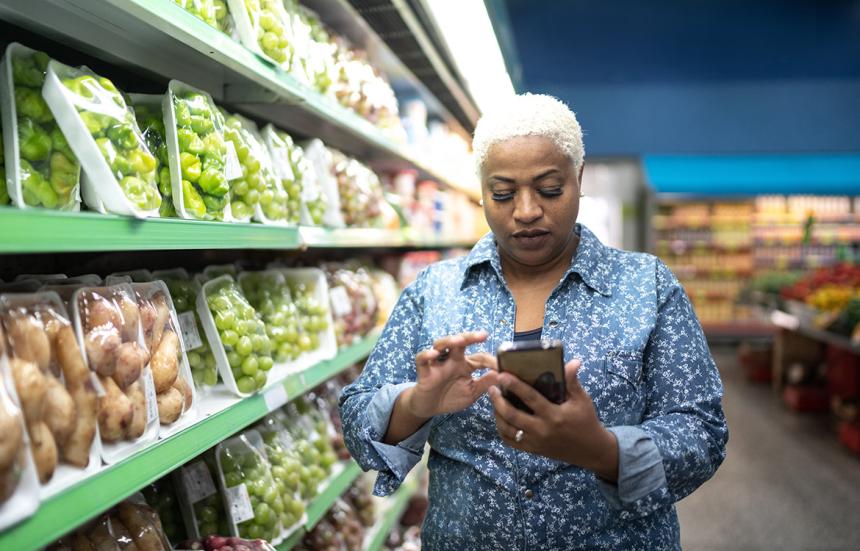Americans Aren’t Using Free Dietary Tools to Eat Healthier

Nutrition is a complex science, but it plays a significant role in our health, so it’s important to understand at least the basics.
Fortunately, there are many dietary tools available to help, including free ones from the United States Department of Agriculture (USDA) that provide guidance on what to eat and drink to help us:
- Meet nutritional needs
- Promote health
- Prevent disease
For years the USDA pitched the Food Guide Pyramid – a 1992 guide to balancing your diet by visually describing food groups, portions and servings sizes. As our understanding of nutrition needs have improved, the pyramid became outdated.
In 2011, the USDA released a new set of nutrition guidelines called MyPlate. Instead of a pyramid, a dinner plate demonstrates a healthy proportion of food groups. One major difference between the two guides is that pyramid promoted grains whereas MyPlate emphasizes fruits and vegetables. The USDA also launched a free app to help educate consumers.
But neither the app nor the larger program is popular tools among Americans. Only 25 percent of American adults are aware of MyPlate and less than 10 percent try to use it, according to a study conducted by the National Center for Health Statistics. The low utilization is attributed to a lack of public education.
But the problem is deeper than just not using the app or following the plate: Most Americans do not follow dietary recommendations.
Why is this a problem? Ultimately, the purpose of this tool is to help Americans lower their risk for chronic illnesses like heart disease and type 2 diabetes. Meanwhile heart disease remains the leading cause of death in the United States and type 2 diabetes is considered an epidemic.
“MyPlate is valuable. Many primary care physicians do not have the time to offer dietary guidance,” says Bernard Kaminetsky, MD, medical director, MDVIP. “But even if your PCP provides nutrition education, the MyPlate program can help you achieve goals your doctor sets for you.”
If you’re trying to lose weight or eat healthier, it might be time to dive into MyPlate. It’s easy to use. The image is designed as a dinner plate, divided into four color-coded sections that guide a reader on food group portions in a meal. Using the app involves taking quizzes, selecting goals and syncing to your smartwatch to track progress.
“The app has some drawbacks,” says Kaminetsky. “However, I believe the USDA is seeking additional funding to strengthen the app.”
For example, it only includes healthy foods, as opposed to a balance of health and unhealthy foods, which is more realistic of a typical American diet. It also lacks fats, a differentiation between starchy and non-starchy vegetables and a recognition that dairy products, grains (particularly whole grains) and vegetables can be good sources of protein.
“For MDVIP-affiliated members, following MyPlate and combining it with the components of the MDVIP Wellness Program like the MDVIP Connect portal and your personalized wellness plan could help you make real strides in your health,” Kaminetsky says.
Looking for a primary care physician? Consider partnering with an MDVIP-affiliated physician. An MDVIP-affiliated doctor can customize a wellness plan for you that can focus on nutrition. Find an MDVIP affiliate near you and begin your partnership in health »


